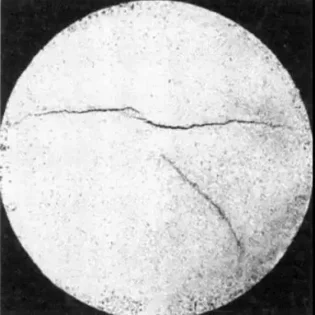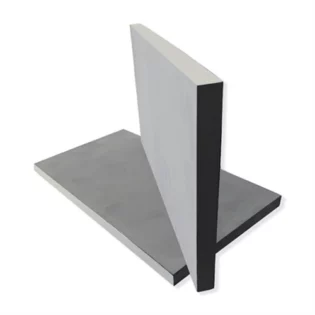Development Status of Corrosion Resistant Cemented Carbides
With the rapid development of industrial technology, people’s demand for materials is getting higher and higher. The materials used should have not only high strength, high hardness but also good corrosion resistance. For example, the chemical industry and machinery require materials to have good chemical stability, strong corrosion-resistance, but also high strength and hardness to withstand the dual effects of chemical corrosion and mechanical wear. Although there are many kinds of corrosion-resistant materials, However, the comprehensive indexes of hardness, strength and corrosion resistance make it imperative to study corrosion-resistant cemented carbides.

Classification of Corrosion Resistant Cemented Carbides
Corrosion-resistant cemented carbides have been developed since the 1950s. According to the different hard phases, corrosion-resistant materials can be divided into three categories: WC-based, Cr3C2-based and TiC-based. The cemented carbides studied in this paper are composed of we and TiC as hard phases.
WC cemented carbide is one of the best metal cutting tool materials with high hardness and excellent wear resistance.
In super hard materials, the hardness and relative toughness range of cemented carbides are wider. The hardness of WC-based cemented carbides is usually 80-95 HRA, and the content of the binder is 6-25%. The linear expansion coefficient of WC-based cemented carbides is very low, which is about 35-60% of the steel in the range of 20-400 C. The heat conduction denier is about 1/2 of steel and 1/3 of copper.
Cr3C2-based cemented carbide has become an important branch of cemented carbide with good corrosion resistance, but its application is limited by its low strength. By adding phosphides, carbides, and other surplus elements, the bending strength of the alloy is increased from 600-700 MPa at the initial stage of development to more than 1OOMPa.
Titanium carbide-based cemented carbides, which are mainly composed of titanium carbide and have high hardness, are mainly used for the finishing and ultra-fine processing of steel. However, it has not been widely used for a long time because of its insufficient toughness.
Factors Affecting the Corrosion Resistance of Cemented Carbide
Cohesive phase
The corrosion resistance of cemented carbides depends largely on the bonding phase. Cobalt is an excellent binder for WC, WC-TiC and cemented carbide. Since the invention of WC-Co hard concept in 1926, cobalt has been the dominant binder for leather.
Cobalt bonding is the most important bonding agent in cemented carbide. This is because cobalt as a bonding agent has good wettability with hard phase in liquid phase sintering and good Sintering Densification with hard phase, so the cemented carbide obtained has excellent mechanical properties, but the corrosion resistance of cobalt as a bonding phase is poor.
The corrosion resistance of nickel as a binder has been greatly improved compared with that of cobalt, so the use of nickel instead of cobalt as a binder has been more and more widely used. But because nickel is fee crystal structure, its mechanical properties are inferior to that of cobalt. The wettability of nickel to cobalt is worse than that of WC, so the mechanical properties of the alloy are worse. In order to solve this problem, the hardness, toughness, strength and wear resistance of hard gold can be improved by adding a quantitative additive to the matrix.
Hard phase
The cemented carbides can be classified into the following categories according to the composition of cemented carbides containing residual phases:
Tungsten cobalt alloy

This kind of cemented carbide is often referred to as non-alloyed pure tungsten carbide, cutting cast iron or wear-resistant cemented carbide blades. They are all composed of fine polygonal tungsten carbide particles bonded with cobalt metal. However, they can also be bonded with nickel. This type of cemented carbide can be used for cutting cast iron, nonferrous metals, and non-ferrous metals. Metal materials, but generally not used for cutting steel, but also for some non-cutting systems.
Tungsten carbide alloys

WC is still the main component of carbides in this type of cemented carbide, and a certain amount of TiC is added to it, which is mainly used to cut steel. In cutting steel, pure carbide alloys are prone to crescent depression wear or tool surface abrasion. This is not due to cutting tools and cutting under high-speed cutting. The high temperature will occur at the interface, which will accelerate the diffusion between tools and workpieces and gradually wear the tools and eventually form crescent depression. TiC addition can effectively reduce the diffusion rate and inhibit the formation of crescent depression, while TiC addition can improve the thermal hardness of the alloy.
Titanium carbide has a density of 4.9g/cm3, much lower than tungsten carbide’s density of 15.6g/cm3. So the light-alloy can be obtained by choosing WC-TiC compound carbide as a hard phase.
In addition, the hardness of WC-TiC alloy obtained as a hard phase is higher than that of single WC alloy, and the hardness of WC-TiC alloy increases with the increase of TiC content in WC-TiC. However, WC-TiC solid solution phase can not be completely wetted by cobalt or nickel bonding phase and the structure of WC-TiC alloy can not be completely wetted by cobalt or nickel bonding phase. The bending strength of the alloy is not as good as that of WC as a hard phase.
Titanium Carbide

This kind of alloy is mainly composed of iron carbide as a hard phase, and its hardness is relatively high. It is mainly used for the finishing and ultra-fine processing of steel.
Other cemented carbides
include chromium carbide, carbide, titanium carbide alumina cemented carbide and so on. They have their own characteristics and are developing.
Next week we will talk about other factors that affect the corrosion resistance of cemented carbides. Welcome to make your subscription.









